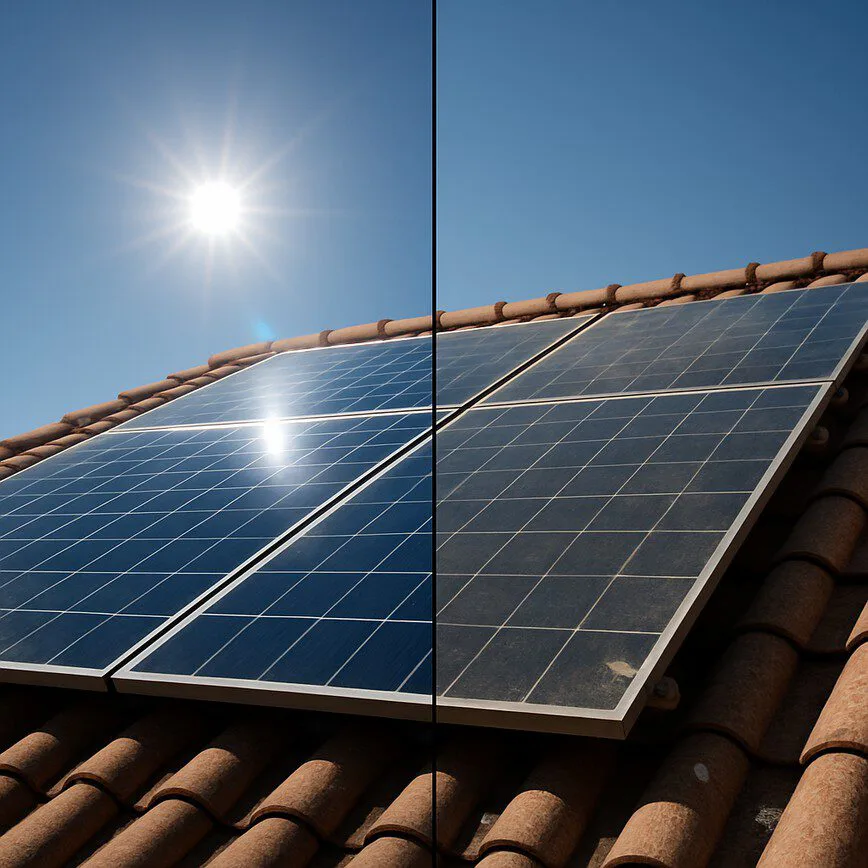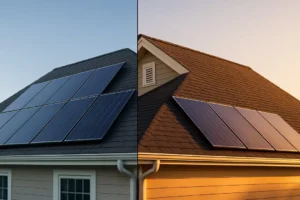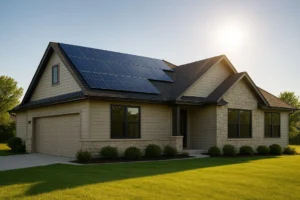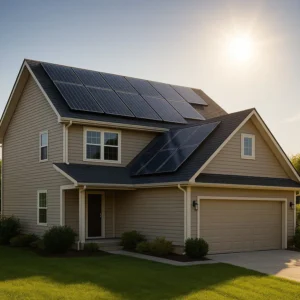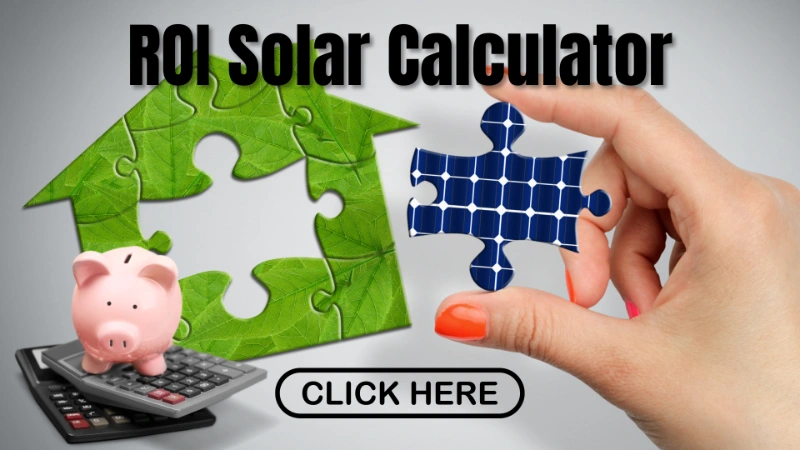Investing in a residential solar system is a brilliant move for your wallet and the planet. Solar panels are celebrated for their durability and low-maintenance nature, but “low-maintenance” doesn’t mean “no-maintenance.” To ensure your system operates at peak efficiency for decades, a little proactive care is essential. This guide will walk you through how to maintain your solar panels, identify the biggest potential problems, and troubleshoot common issues that can affect your energy production and electric bill.
Table of Contents
Understanding the basics of solar panel care empowers you to protect your investment and maximize your energy savings. Let’s dive into the simple steps and solutions every solar homeowner should know.
How Often Do Solar Panels Need Maintenance?
This is one of the most common questions from new solar owners. The straightforward answer is: solar panels generally require professional inspection and cleaning once or twice a year.
However, the ideal frequency depends on your specific environment:
- Climate: If you live in an area with very little rain, more frequent cleaning may be necessary to wash away accumulated dust. Conversely, regular rainfall can help keep your panels relatively clean.
- Dust and Pollen: Dry, dusty, or agricultural areas can coat panels in a layer of grime that reduces efficiency. Heavy pollen seasons can have a similar effect.
- Birds and Trees: If your home is surrounded by trees or is a popular spot for birds, you’ll likely deal with more debris, leaves, and droppings, requiring more frequent checks.
A visual inspection from the ground once a month is a great habit. If you notice a visible layer of dirt or debris, it’s probably time for a cleaning.
The Biggest Problem with Solar Panels: Diagnosing Performance Dips
When homeowners ask about the “biggest problem with solar panels,” they’re usually referring to a drop in energy production. It’s rarely a single catastrophic failure but rather a collection of smaller, fixable issues that hinder performance.
The most significant challenge is simply not knowing that your system is underperforming. A gradual buildup of dirt or a minor inverter issue can go unnoticed for months, slowly chipping away at your savings. The key is regular monitoring and knowing what to look for. The most common culprits behind performance dips include:
- Surface Grime: Dust, pollen, bird droppings, and soot.
- Shading: New tree growth or a neighbor’s new construction can cast shadows on your panels.
- Inverter Issues: The inverter, which converts DC power to usable AC power, can experience faults.
- Wiring or Connection Problems: Damaged or loose connections can interrupt the flow of electricity.
Troubleshooting Solar Panel Output: Common Issues and Fixes
If you’ve noticed a dip in your system’s energy production, don’t panic. Here’s a quick guide to troubleshooting solar panel output for the most common problems.
Issue 1: Dirt, Dust, and Debris
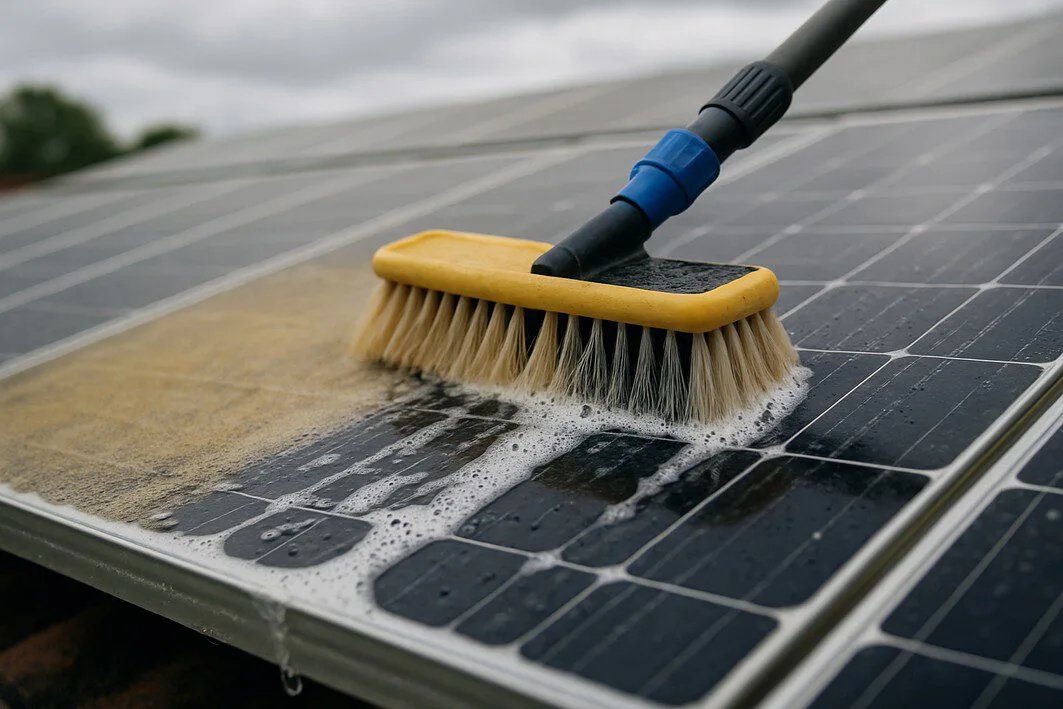
The Problem: A simple layer of grime can act as a film, blocking sunlight and significantly reducing your panels’ efficiency. Studies have shown this can decrease output by 5% to over 20% in some cases.
The Fix: For most homeowners, a gentle cleaning is all that’s needed. On a cool, overcast day, you can:
- Spray the panels with a regular garden hose to wash away loose dust.
- For more stubborn grime, use a soft-bristled brush with a long extension pole and a bucket of soapy water (a small amount of dish soap works well).
Never use harsh abrasives or high-pressure washers, as this can damage the panels.
Issue 2: Shading from Trees or New Construction
The Problem: Modern solar panels are resilient, but even partial shading on a single panel can sometimes affect the output of the entire string. New tree growth is the most common cause of unexpected shading.
The Fix: Regularly assess your roof for new shadows. The solution is often as simple as trimming back tree branches that have grown to overhang or cast shadows on your array during peak sun hours.
Issue 3: Inverter Malfunctions
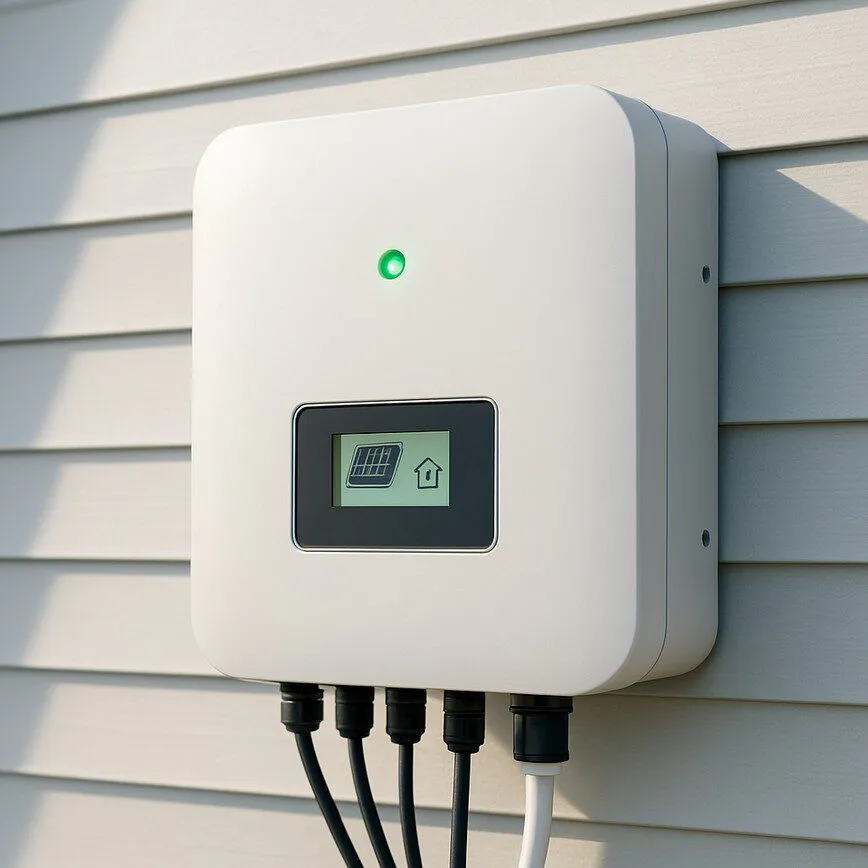
The Problem: Your inverter is the brain of your solar system. If it’s not working, no power is being converted for your home’s use. Most inverters have a status screen or indicator lights.
The Fix: Check your inverter’s display for any error codes or warning lights. A solid green light typically means everything is running smoothly. If you see a flashing light or an error message, try a simple reset (the procedure is usually detailed on the unit itself or in the manual). If the error persists, it’s time to call a professional for service.
Why Is My Electric Bill So High with Solar Panels?
Getting a higher-than-expected utility bill after going solar can be confusing and frustrating. If your system appears to be working, here are a few reasons this might be happening.
Reason 1: Increased Energy Consumption
It’s a common psychological phenomenon: with solar, we sometimes feel we have “free” energy and subconsciously increase our usage. Did you recently install a new appliance, like an EV charger or a hot tub? A simple energy audit can reveal if your household consumption has crept up.
Reason 2: System Performance Issues
This ties directly back to our troubleshooting section. A high bill is often the first sign that your panels need cleaning or that another part of your system requires attention. Reduced output means you’re pulling more power from the grid, increasing your bill.
Reason 3: Changes in Utility Rates or Policies
Utility companies can change their rate structures. You may have been moved to a Time-of-Use (TOU) plan where electricity costs more during peak afternoon and evening hours—precisely when your solar production is winding down. Review your latest bill carefully for any notices about rate changes.
Reason 4: Seasonal Variations
Your solar production will naturally be lower in the winter due to shorter days and a lower sun angle. It’s normal to rely more on the grid during these months. Understanding your system’s expected seasonal output, which you can often calculate with an ROI calculator, helps set realistic expectations year-round.
Empowering Your Solar Journey with Knowledge
Maintaining your residential solar solution is straightforward once you know what to look for. By staying informed and proactive, you ensure your system continues to deliver maximum value for years to come.
At RenewGenius, we believe an educated homeowner is an empowered one. Our mission is to provide a comprehensive solar knowledge base that gives you the confidence to manage your system effectively. While this guide covers the basics, there’s always more to learn about specific cleaning techniques, warranties, and advanced diagnostics. For a deeper dive, explore our comprehensive resources on solar panel maintenance, where we provide detailed articles and guides to help you every step of the way.

